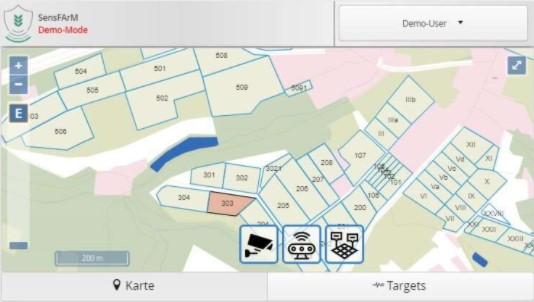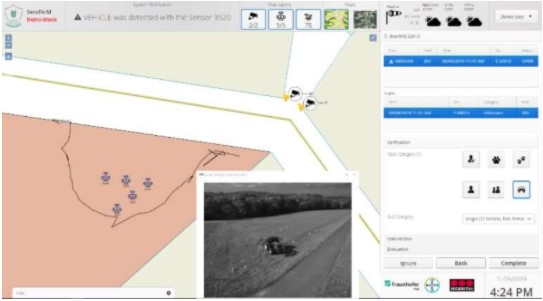By Fraunhofer-Gesellschaft

An easy-to-read display showing all relevant information for a specific area is available via a mobile app for smartphones or other handheld devices. This provides interactive functionality, enabling users to zoom in for more details, for example, or show additional information.
The world is having to feed an increasing number of mouths. Studies indicate that global population will rise to over nine billion by the year 2050. In response, Bayer AG is researching resistant cereal varieties and enhanced crop protection. A new 24-hour monitoring system from the Fraunhofer Institute for Communication, Information Processing and Ergonomics FKIE will help protect the fields where these test crops are grown and thereby safeguard this time-consuming and cost-intensive research.
It is no easy task feeding the world's growing population—especially with the challenges posed by climate change. Bayer AG is therefore conducting research into resistant cereal varieties and improved crop protection. These trials are conducted on leased estates and fields that are publicly accessible. As such, there is always the risk that unauthorized persons will intrude and cause damage, by destroying plants, for example, or introducing other species. If not immediately detected, this can set a project back and result in significant financial losses. It is therefore vital that any suspicious activity is discovered as quickly as possible, so that any damage can be checked right away. Yet conventional monitoring systems are unsuitable. This is because test fields are far apart, out of the way and rotate after a year. Crucially, too, there is usually a lack of communications infrastructure.
Low-cost, flexible monitoring around the clock
Working from its headquarters in Wachtberg, near Bonn, the Fraunhofer Institute for Communication, Information Processing and Ergonomics FKIE has developed a system that solves this problem: SensFArM (Sensor-Based Flexible Area Monitoring). "Our system is flexible, scalable, robust and user-friendly," explains Arne Schwarze, research group manager at Fraunhofer FKIE. "It's also the first to enable around-the-clock monitoring." The system must meet three principal requirements. First of all, it must be able to distinguish between vehicles, people and animals. Is that a person in the field or just a deer? Second, the system must be able to localize the disturbance. Where exactly is the person? Third, it must be able to track the movements of an intruder person across the field. This revels whether the whole field is affected or only certain areas.
The system includes an electro-optical camera, an infrared camera and seismic sensors that are buried in the ground and create a network to detect any vibrations. "We can also connect up other types of sensor, including mobile sensors fitted to a drone," Schwarze explains. The information from these sensors is then combined by means of a data fusion algorithm. This pools the strengths of different types of sensor data and thereby avoids false alarms. For example, the motion sensor in the optical camera will react merely to the shadow of a cloud moving across the field. But by adding data from the infrared camera, which only reacts to sources of heat, a more complete picture can be formed. The algorithm also takes account of the conditions under which specific sensors deliver reliable results. "When it's dark, for example, infrared data is more im-portant than optical data," says Schwarze. Time is another key consideration when it comes to assessing risk: if a person dashes into a field to fetch a dog that has discovered a dead rabbit, this is a completely different situation to when an intruder deliberately walks through a crop and shows no sign of leaving.

In the security operation center (SOC), security personnel analyze sensor data that is processed by a data fusion algorithm.
Click here to see more...